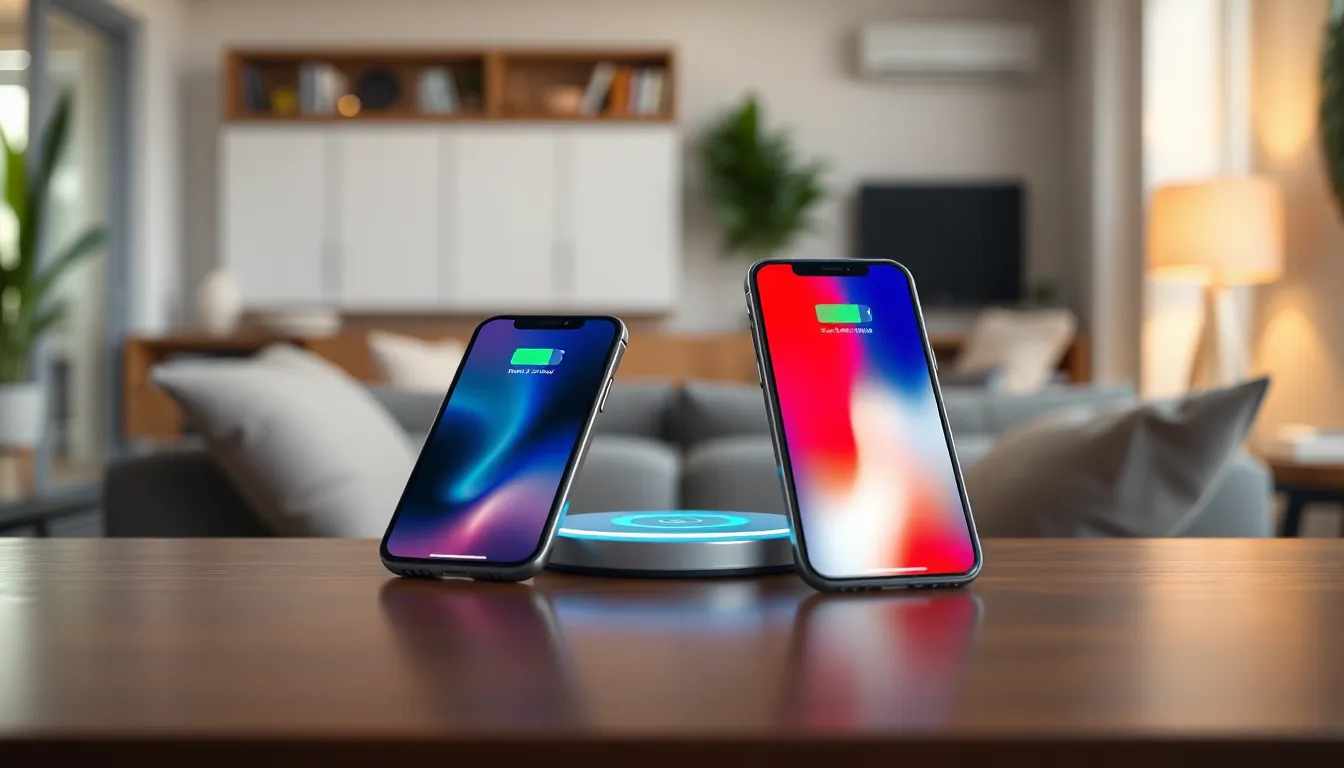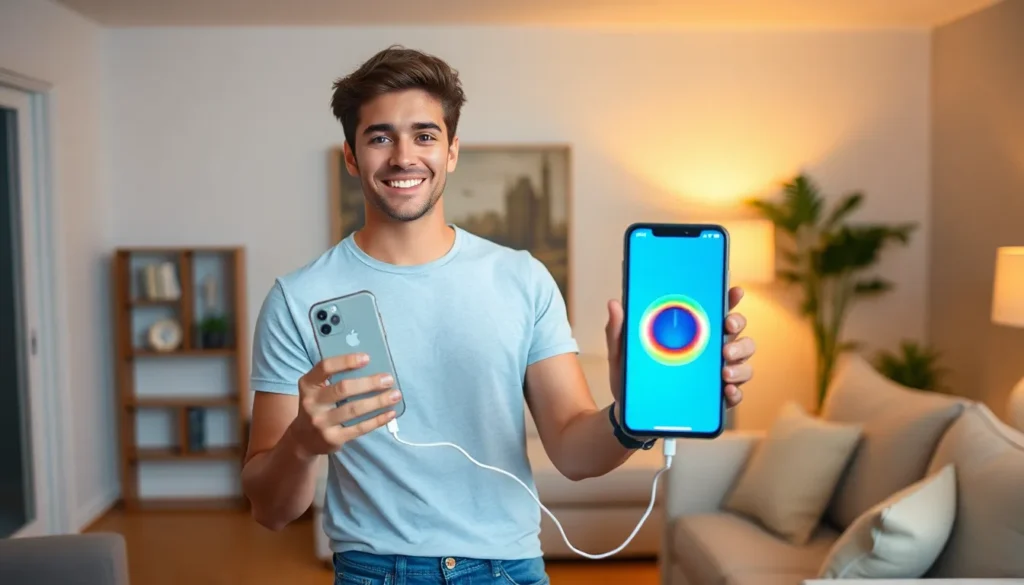Table of Contents
ToggleEver found yourself in a pinch with your iPhone battery teetering on the edge of extinction while your friend’s phone is as charged as a caffeinated squirrel? You’re not alone. In a world where staying connected is crucial, knowing how to share battery power can save the day—and your social life.
Understanding Battery Sharing
Battery sharing allows one iPhone to provide power to another, making it an effective solution during emergencies. Apple’s iPhones do not inherently support this feature; however, individuals can utilize a few methods to share battery life.
First, using a charging cable with a power bank serves as a portable option for sharing power. These power banks come in various capacities, providing an additional source of energy for one iPhone while another remains tethered to the bank.
Second, users can connect to a friend’s iPhone using a USB cable. This process typically requires an adapter, such as a Lightning to USB-C, or a compatible connection based on device specifications.
Third, employing AirDrop features can help share information about battery levels, ensuring both users remain aware of their status. Knowing battery percentages can prompt a decision to share battery life if needed.
In addition, Apple has introduced Wireless PowerShare on certain newer models. This function allows one iPhone to charge another wirelessly, as long as both devices support the feature.
Battery life management apps assist in monitoring usage, providing insights on how long a device can sustain power. These applications help users plan their usage efficiently, knowing when sharing may be necessary.
Utilizing these options can greatly enhance connectivity during crucial moments. Battery sharing not only mitigates stress during low-battery situations, it fosters a sense of community among iPhone users by offering practical support.
How Battery Sharing Works on iPhone

Battery sharing allows one iPhone to provide power to another, ensuring connectivity during critical moments. Understanding how this feature operates is crucial for effective use.
Enabling Battery Sharing
To enable battery sharing, users must access the settings. Go to the battery section and check the options available for power sharing. Connecting the devices often requires a compatible cable or a wireless charging pad. Adjust settings as needed for optimal performance. It’s essential to ensure both devices are powered on during this process. After enabling the feature, watch for battery percentage changes.
Compatibility Requirements
Compatibility varies depending on the iPhone models and software versions. Users should have an iPhone that supports Wireless PowerShare for seamless functionality. Newer models have this capability, while older versions may lack the required hardware. The latest operating system also plays a significant role in enabling battery sharing. Familiarity with device specifications ensures potential connection success. Check the manufacturer’s website for detailed compatibility information for specific iPhone models.
Step-by-Step Guide to Share Your Battery
Sharing battery power between iPhones can prove valuable in low-battery situations. This section outlines straightforward methods to do so.
Using the Control Center
Accessing the Control Center provides an easy way to manage battery sharing. Begin by swiping down from the top-right corner of the screen on newer iPhones. Locate the battery icon on the screen. If the battery sharing feature is available, it appears in the options. Activate it by tapping on the icon, ensuring both devices support this function. Confirm that both iPhones remain unlocked, as this keeps the connection active while sharing power. Monitor the battery percentage on both devices, as it helps maintain awareness of energy levels during the transfer.
Connecting to Another iPhone
Connecting via a cable offers another practical method to share battery between iPhones. Use a compatible Lightning cable and connect the charging port of one device to the other’s. Ensure the first phone remains powered on for successful charging to occur. Observe the battery icon on the receiving device, indicating the charging status. Allow a few moments for the transfer; the time varies based on battery levels. Prioritize checking compatibility of the iPhone models, as this connection method typically works with newer versions.
Tips for Effective Battery Sharing
Ensuring compatibility is key for successful battery sharing. Use a Lightning cable if both iPhones support it, and verify that each device is from a model that can share battery. Be aware of the required iOS versions; newer models function better with this feature.
Activate battery sharing in the Control Center. Swipe down from the top-right corner to access settings, then enable the option. Both devices must be unlocked for this process to work smoothly.
Monitor the battery levels during the transfer. Keep an eye on percentage changes to avoid unexpected power loss. Disconnect once the recipient device reaches a satisfactory charge level to preserve battery on the energy-donating iPhone.
Consider external accessories for enhanced efficiency. Using power banks can facilitate sharing without needing direct connections. These devices often provide faster charging and more flexibility.
Evaluate surrounding conditions during sharing. Strong Bluetooth signals facilitate smoother connections, while interference might disrupt the process. Minimize obstacles such as physical barriers that could hinder the connection quality.
Sharing battery power encourages community among users. Helping others during emergencies fosters collaboration and ensures that devices remain functional in critical moments. These simple tactics enhance connectivity and provide a safety net in low-battery situations.
Sharing battery power between iPhones can be a lifesaver in critical situations. By understanding the methods available and ensuring compatibility, users can easily assist one another when battery levels run low. Whether using a charging cable or taking advantage of Wireless PowerShare, staying connected is more achievable than ever.
Monitoring battery levels and following the necessary steps ensures a smooth transfer. This practice not only fosters a sense of community but also enhances the user experience during emergencies. Embracing these simple strategies empowers iPhone users to stay connected and maintain functionality when it matters most.




